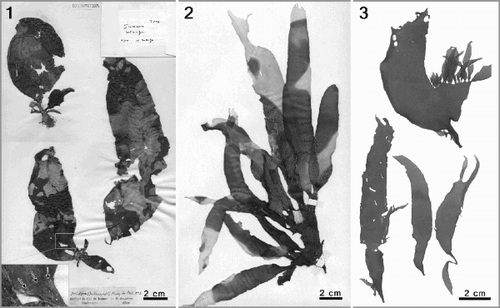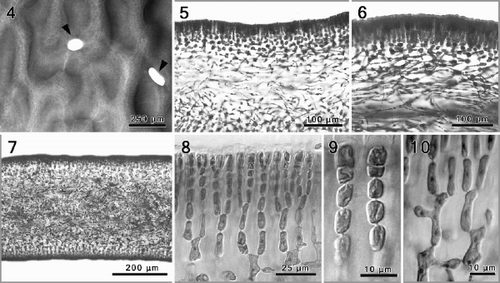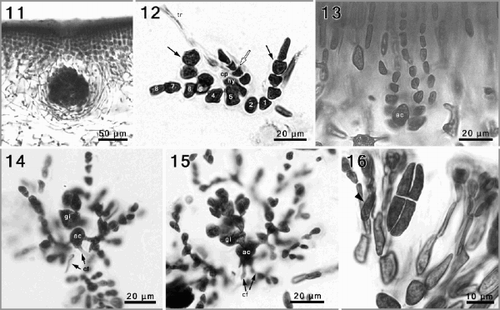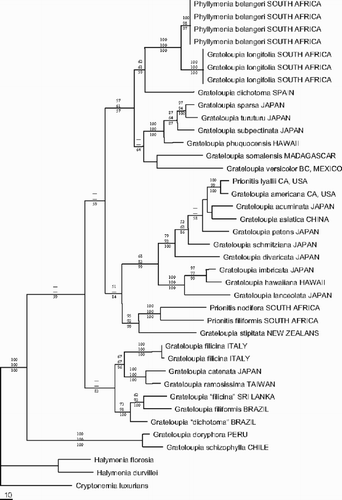Figures & data
Table 1. List of species used in rbcL analysis with accession numbers
Figs 1–3. Phyllymenia types and external morphology. . Type sheet of Phyllymenia belangeri (Herb. Bornet & Thuret, PC TA14583). Top left– young specimen of Gigartina polycarpa; bottom left–basal part is Sarcothalia stiriata and distal blade represents P. belangeri (insert); right–female gametophyte of P. belangeri. . Lectotype of Phyllymenia hieroglyphica (LD 22831). . Recently collected specimens from the Western Cape Province, South Africa (GENT TS425) to show habit.

Figs 4–10. Phyllymenia vegetative morphology. . Detail of the characteristic corrugated surface with irregular perforations (arrowheads). . Cross-section showing gradual transition between the cortex and medullary layer. . Longitudinal section through a tetrasporic thallus showing predominantly periclinal arrangement of the medullary filaments. . Cross-section through the basal part of the thallus showing a dense medulla with numerous rhizoidal filaments. , . Detail of cortex with anticlinal rows of dichotomously branched filaments. . Inner cortical cells with lateral protuberances establishing secondary pit connections.

Figs 11–16. Phyllymenia reproductive morphology. . A maturing cystocarp surrounded by involucral filaments, deeply embedded in the inner cortical layers. . Squashed carpogonial ampulla, with an 8-celled primary filament from which secondary filaments have developed from the first and fifth cell (black arrows), the hypogenous cell (hy) bears a 4-celled filament (white arrow). . A narrowly flask-shaped auxiliary cell ampulla with three, simple secondary filaments. , . Successive stages of gonimoblast development, and formation of involucral filaments; note connecting filaments (cf) attached to the auxiliary cell (ac). . Detail of cruciately divided tetrasporangium and tetrasporangial initials (arrowhead) within modified outer cortical cells.

Fig. 17. Phylogram of one out of two most parsimonious trees (Length = 1163) inferred from rbcL sequence data. Bootstrap percentages of MP (top) and ML (middle) as well as posterior probabilities of BI (bottom) are indicated for each node if higher than 50%.
